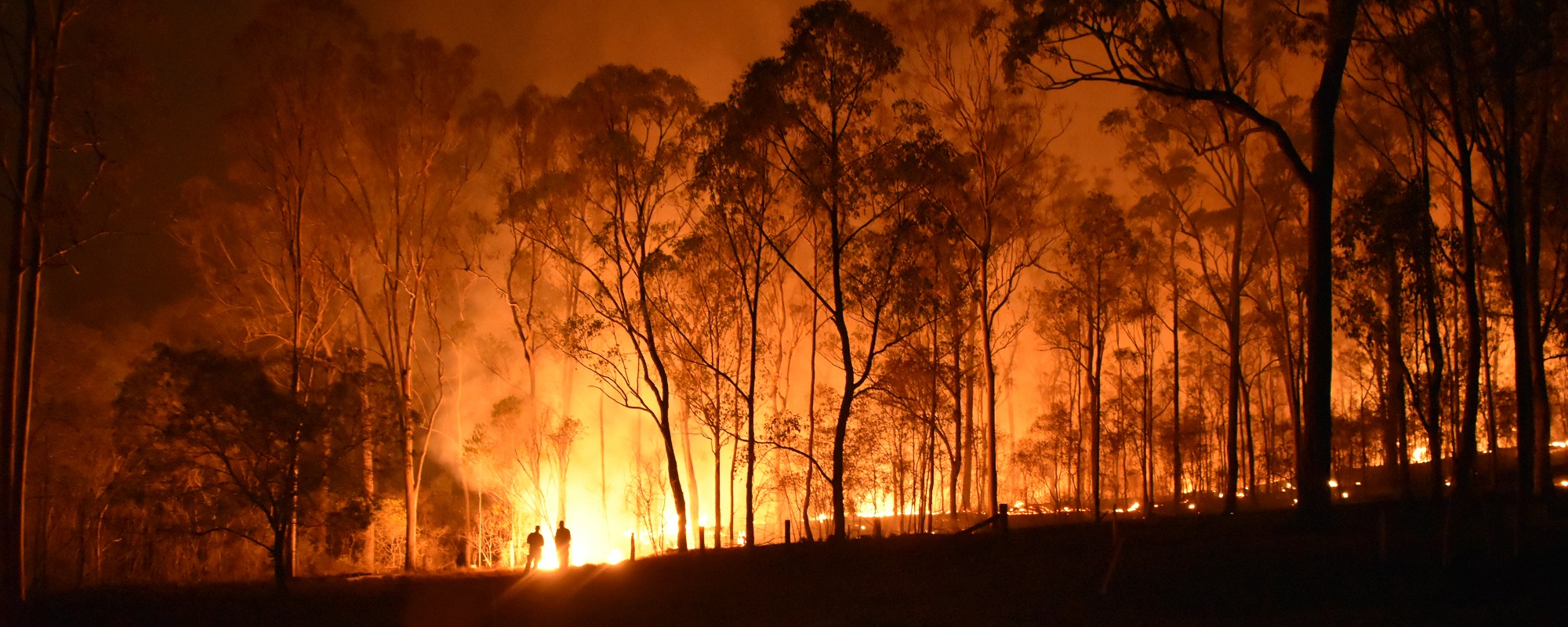
Bushfire risks
February 3, 2020
Sophisticated cyber-attacks: a case study
February 3, 2020This article outlays the major initiatives for our Risk Management Program in 2020, including changes you should be aware of, new resources for Members’ use, and existing services to support your risk management efforts.
Building risk assessment and resilience guideline
This guideline has been developed to assist Members in assessing the exposure of their buildings to the risk of damage from flood or bushfire. Whilst there may be no history of overland flood-related losses at your campus, there remains the possibility of such losses occurring in the future. Remember, there is a new weather paradigm (more intense weather events) and any building with basements or lower ground floor levels below the adjacent ground levels or that are at a level below an extensive area of hardstand (paved parking areas) could potentially be subject to flooding. Naturally, the same applies to bushfire risk – any building on the bushland interface or in the proximity of an expanse of urban parkland (even one not designated as a bushfire zone) may be susceptible.
The guideline involves a two-part process, firstly a screening level risk assessment, followed by a more detailed assessment where warranted. A cost-benefit analysis is also included to assist justification of capital expenditure if required. The Building Risk Assessment and Resilience Guideline can be found here.
Root cause analysis tool
Most losses present an excellent opportunity for learning. Investigating why incidents or losses occurred helps us understand what the contributing factors and root causes were, so that actions can be put in place to avoid future occurrences. This form of team-based analysis is most effective when the answers come from people who have hands-on experience of the process being examined.
The root cause analysis tool is a simple process based on the “Five Whys” – Sakichi Toyoda, one of the fathers of the Japanese industrial revolution, developed the technique in the 1930s. He was an industrialist, inventor, and founder of Toyota Industries. His method became popular in the 1970s, and Toyota still uses it to solve problems today.
It is remarkably simple: when a problem occurs, you drill down to its root cause by asking “why?” five times. Try it next time you have an incident or a loss – read more here.
Emerging risk reports
The latest emerging risk reports (#84 and #85) relate to Aluminium Composite Panels (ACP): the nature of the risk, its prevalence, and actions Members can take to address the risks. In some instances, replacement may be necessary. Should this be the case it is important not to replace ACP with a product that is also potentially flammable. When searching for appropriate cladding products, consider those that are:
- FM-approved,
- Deemed-to-Satisfy and non-combustible when tested to AS 1530.1 and AS 1530.3 in accordance with the National Construct Code 2019 Clause C1.9(e)(vii) requirements, and
- tested to BS 8414 and AS 5113 full-scale testing to prove it does not contribute to the spread fire.
A recent fast fire spread incident in the UK involved student accommodation which was clad in a product known as High Pressure Laminate (HPL). Research published in the Journal of Hazardous Materials has revealed that HPL cladding materials release 115 times more heat, and 25 times faster, than non-combustible products.
HPL panels are usually made by taking sheets of wood or paper fibre, layering them with a resin and bonding them under heat and pressure. HPL panels may or may not include additional chemicals that give the panel fire retardant properties. HPL is often used to produce colourful skins on new buildings – but HPL materials can have a wide range of fire performance, so it is important that building owners are aware of the fire performance of this type of panel.
It’s clear that cladding in general is not the problem since only certain types of cladding pose a danger. Solid aluminium and mineral-based cladding products are generally preferred in terms of fire safety. Fibre cement panels are also non-combustible and able to withstand intense heat.
Risk management program 2020
Impairment notifications
As notified on June 5, 2019, there is a new impairment notification process, procedure and form – the AXA XL RSVP (Restore Shut Valves Promptly) Program. Each Member was sent a customised form containing unique location identification numbers for each campus. Most Members have implemented the new process; however, a number are still using the superseded AIG form and process. Please check with security/facilities management that the RSVP process and form have been adopted. If you have any questions please call Kerry French or Simon Iliffe at Unimutual (02 9247 7333).
Risk engineering program
Thank you to all those Members who participated in the 2019 risk engineering program.
The purpose of the risk engineering survey is to assist with identifying and mitigating hazards and exposures that may lead to loss or damage to assets or cause business interruption. Each year we review the property loss experience of the Mutual and identify issues to target in addition to the usual fire protection review. This year’s target areas will again include the management of Controlled Environments (CEs), as well as cold storage of chemicals, chemical handling, presence of combustible cladding, solar panels, overland flooding and bushfire.
In addition to regular engagement and visits, we plan detailed visits to Member campuses every three years. Those Members due for their three-yearly visit in 2020 include (but may not be limited to):
More content available to Members Only
Login To Unlock The Content.What’s on in 2020 for Controlled Environment management
We will shortly publish further resources including:
- A Controlled Environment contents valuation guideline
- Strategies to protect research and become “mitigation” ready
Unimutual will also continue to provide:
- Mini seminars on CE management
- Inventory preparation and review
- TCE/CE contents valuation
- Preparation research protection and continuity reports
All you need to do is ask for any of these free services.
Upcoming conferences and seminars
The AURIMS conference is on 10-12 June in the National Capital.
The conference will be jointly hosted by ANU, UC, ACU and CSU, and will be held in Canberra at the Hyatt Hotel. Planning is well underway: the call for abstracts and sponsorship opportunities will be circulated soon.
Also, don’t forget that you can host a mini seminar on your campus on “How to value your CE contents and research samples”, or a seminar on the risk topic of your choice which we will deliver for you. Risk consulting services are also available free of charge, so if there is something you think we can help with, just let us know.



